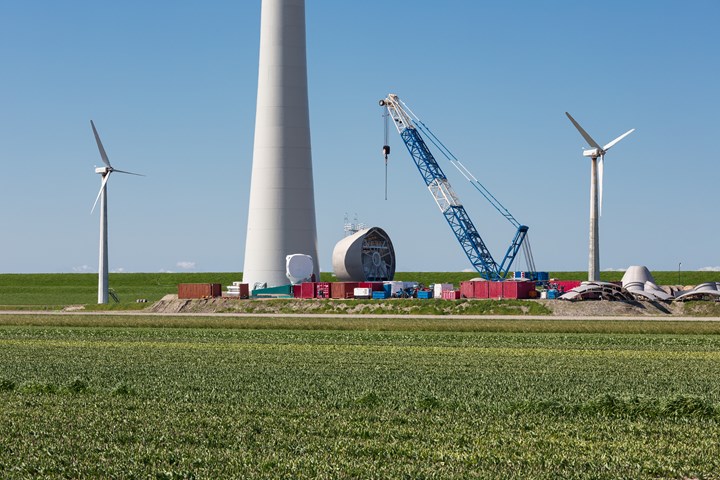Sign up today to get the best of our expert insight in your inbox.
What will REPowerEU and the Inflation Reduction Act mean for hydrogen?
Flagship climate policy in the EU and the US could give hydrogen the jumpstart it needs
5 minute read
Murray Douglas
Vice President, Hydrogen & Derivatives Research

Murray Douglas
Vice President, Hydrogen & Derivatives Research
Murray is responsible for Wood Mackenzie’s global coverage across the hydrogen value chain.
Latest articles by Murray
-
Opinion
Our top takeaways from the World Hydrogen Summit
-
Opinion
eBook | The hydrogen opportunity from now to 2050: what utilities and developers need to know
-
Opinion
eBook | The hydrogen opportunity from now to 2050: what industrial players need to know
-
Opinion
eBook | Investing in hydrogen from now to 2050: what you need to know
-
Opinion
What lies ahead for hydrogen and low-carbon ammonia?
-
Opinion
Ebook | Overcoming the challenges around hydrogen deployment
Hydrogen is central to achieving net zero, particularly in the most hard-to-decarbonise sectors, where replacements for fossil fuels are few and far between. Hydrogen will also complement the electrification of many other sectors and is poised to play a role in power generation itself.
Wood Mackenzie forecasts global demand of low-carbon hydrogen to increase from less than 1 million tonnes (Mt) to over 200 Mt by 2050 and the project pipeline is growing fast. The capital cost of hydrogen production technologies is forecast to reduce significantly in the next five to 10 years.
That said, successful scaling will rely on access to low-cost, low-carbon electricity for green hydrogen. With low-cost natural gas and successful deployment of CCUS to underpin blue hydrogen.
Perhaps most importantly, firm and clear policy support is needed to give hydrogen the jumpstart it needs.
Throughout the summer of 2022, we’ve seen two of the biggest energy markets announce major policy support for low-carbon hydrogen. The EU with REPowerEU and the Inflation Reduction Act (IRA) in the US. Each is framed differently, but both will support the wider industry drive towards 2030 and 2050 net zero targets, and in turn, help a faster scale-up of hydrogen.
Policy support for clean hydrogen: REPowerEU sets ambitious production and import targets while the US IRA reintroduces production tax credits.
REPowerEU – unlocking demand by 2030
Driven by the need to rapidly reduce its reliance on energy imports from Russia, the European Commission published its detailed REPowerEU plan on 18 May 2022, which aligns with Europe’s long-term decarbonisation objectives. Underpinning the plan is the target to increase the EU's renewables target to 45% by 2030.
The plan has set an ambitious low-carbon hydrogen production target of 10 Mt, with an additional 10 Mt of imports by 2030. This target aims to primarily displace natural gas consumption but will also replace some use of oil and coal.
Despite the momentum in low-carbon hydrogen supply growth we are experiencing, such a lofty target in such a short timeframe is beyond our most optimistic forecasts. Additionally, there are questions as to whether Europe can unlock enough demand for hydrogen by 2030.
Short-term demand opportunities will be driven by refining and ammonia. However, even if 100% of this demand switched to low-carbon hydrogen it would only increase the consumption to just over 5Mt. Indeed, REPowerEU's forecast by sector assumes as much. The additional 15 Mt of demand comes from new sectors switching to hydrogen – an ambitious leap to make this decade.
Blending into the natural gas grid is a potential short-term demand driver, but it is a sub-optimal use of low-carbon hydrogen. Steel pilot projects are popping up across the EU, but the technology still needs to mature and scale. Mobility projects are gaining momentum, but hydrogen refuelling infrastructure is costly to deploy. The momentum and performance of electric passenger vehicles continues to outpace hydrogen but other transport options – across road, rail, maritime and aviation – show more promise for hydrogen.
Industrial consumers need to develop costly fuel-switching technologies. For this, the European Commission has allocated €41bn as part of the REPowerEU plan to switch from fossil fuels to alternatives – including hydrogen. In addition, €27bn is allocated to deploy key hydrogen infrastructure. More recently, The European Commission has announced plans for a Hydrogen Bank, with an initial €3bn available to invest. These sums will aid some sectors, but ultimately the full value chain cost of hydrogen remains a challenge. Strong policy support and financial incentives remain key to bringing more hydrogen to market.
Blending into gas turbines is already being trialled and all major turbine manufacturers have plans to increase blending limits – with aims to develop 100% hydrogen-fired turbines. But 2030 will likely be too soon to deliver the scale that the power sector can offer to hydrogen.
So, although momentum on the supply side continues to build, realising hydrogen's 2030 goal will be challenged by how much demand can be unlocked – and at what prices.
The full value chain cost of hydrogen remains a challenge.

Murray Douglas
Vice President, Hydrogen & Derivatives Research
Murray is responsible for Wood Mackenzie’s global coverage across the hydrogen value chain.
Latest articles by Murray
-
Opinion
Our top takeaways from the World Hydrogen Summit
-
Opinion
eBook | The hydrogen opportunity from now to 2050: what utilities and developers need to know
-
Opinion
eBook | The hydrogen opportunity from now to 2050: what industrial players need to know
-
Opinion
eBook | Investing in hydrogen from now to 2050: what you need to know
-
Opinion
What lies ahead for hydrogen and low-carbon ammonia?
-
Opinion
Ebook | Overcoming the challenges around hydrogen deployment
The Inflation Reduction Act – incentives for early movers
The Inflation Reduction Act (IRA) – signed into law by President Joe Biden on 16 August – is one of the largest public investment proposals in US energy sector history. It establishes new incentives for low-carbon hydrogen production and other technologies such as carbon capture, utilisation and storage (CCUS), that can scale now and set the stage for emerging technologies.
The Act reintroduces a production tax credit (PTC) for clean hydrogen, known as the 45V. Like in the Build Back Better framework, qualifying hydrogen production facilities can obtain a ten-year production tax credit of up to US$3/kg for qualified hydrogen starting the date the facility was placed in service. The PTC evaluates emissions at each step, from feedstock generation to its use case, ultimately giving renewable-based hydrogen the leg up.
Today, low-carbon hydrogen production technologies still require a significant amount of capital investment. The 45V will provide the financial certainty to scale up this nascent industry. Driving down capital costs and accelerating technology gains.
We expect that the 50+ announced hydrogen projects will be accelerating their development schedules to secure the 45V tax credit. More than half of these announced projects are in Texas, Louisiana, Mississippi, Oklahoma and California, and two-thirds of announced projects are electrolysis-based.
While it’s no surprise that Gulf operators have plans to decarbonise their assets and California is targeting hydrogen for transportation, we believe this would be the tip of the iceberg.
Policies to help build a nascent industry
Despite its benefits, the IRA is not a single solution for addressing energy prices and climate change. Infrastructure permitting for power transmission is not addressed by the Act and so both policy and markets will need to evolve further.
Similarly, the REPowerEU plan offers a high-level target, but more detail is urgently required, including how Europe will address the challenge around unlocking hydrogen demand in the region.
Overall, these two flagship policies will drive growth and uptake for hydrogen. The IRA offers clear and generous support. The European Commission’s plan offers an attractive headline target for domestic producers and those looking to develop hydrogen exports. But it lacks the clear incentives and detail required to underpin such lofty targets, which are desperately needed to support the region’s shift away from Russian energy in a sustainable way.
This article first appeared on rechargenews.com.







